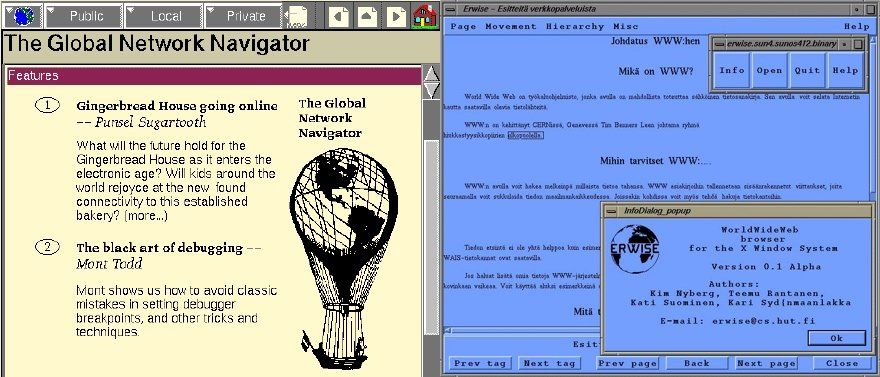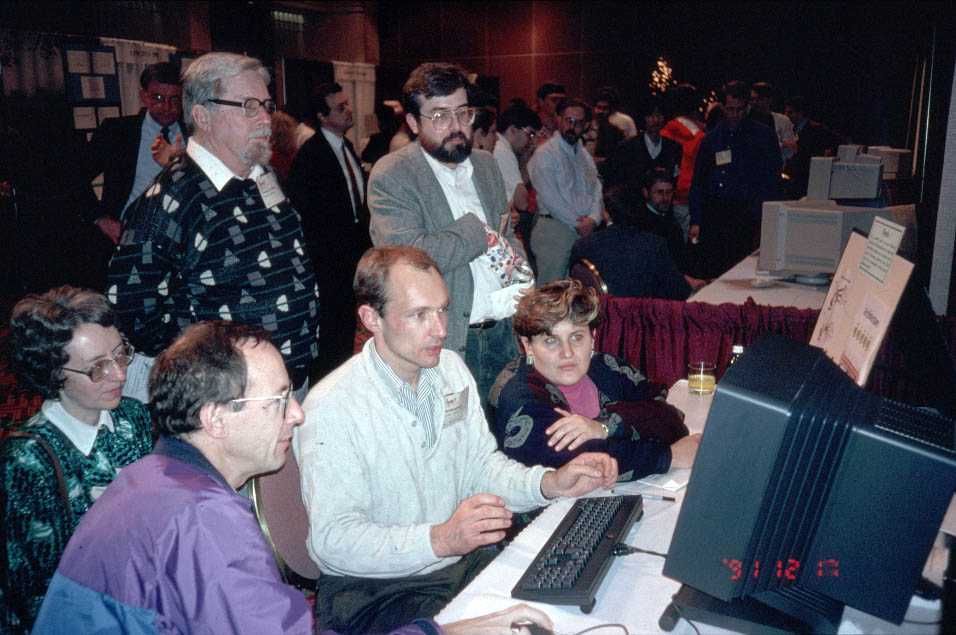Dot-com
Internet history during the dot-com era, from the 1990s through to the first few years of the 2000s.
Note: some of these articles were migrated from my previous website, Web Development History (WDH), which was active during 2021. Check the timeline for a chronological list of WDH posts.
-

1993: Mosaic Launches and the Web is Set Free
On 14 January 1993, Marc Andreessen put a call out on the WWW-Talk mailing list for people to test a new WWW browser in development: X Mosaic.
-

1992: The Web vs Gopher, and the First External Browsers
Three new, non-CERN web browsers were released over 1992, at a time when there were less than twenty websites in the world. It was a turning point for the young Web.
-

1991: Tim Berners-Lee Tries to Convert the Hypertext Faithful
After a year and a half of stalling from CERN management, Tim Berners-Lee must’ve hoped the momentum he’d gathered at the end of 1990 would continue into the new year. He was sadly mistaken.
-

1990: Programming the World Wide Web
In the final few months of 1990, Tim Berners-Lee and his colleague Robert Cailliau developed the world’s first browser, created HTML, wrote the first web server, and invented HTTP.
-

1999: The Fall of Netscape and the Rise of Mozilla
By 1999, not only had Netscape fallen behind Microsoft in browser technology, it also had trouble navigating relationships — with both its parent AOL and the developers of its open source project, Mozilla.
-

1996: Flash and CSS Bring Design to the Web
There were two stylistically opposed approaches to web design in the 1990s, epitomized by two distinct — and utterly different — technologies, both of which debuted in 1996.
-

1995: MySQL Arrives, Completing the LAMP Stack
By the end of 1995, the foundational pieces of the open source LAMP stack for web development (Linux, Apache, MySQL, PHP/Perl/Python) were in place. However, MySQL was not initially open source.
-

1995: Apache and Microsoft IIS Shake Up the Web Server Market
The Apache project was publicly announced in April 1995. It was followed soon after by Microsoft's first web server software, Internet Information Server (IIS).